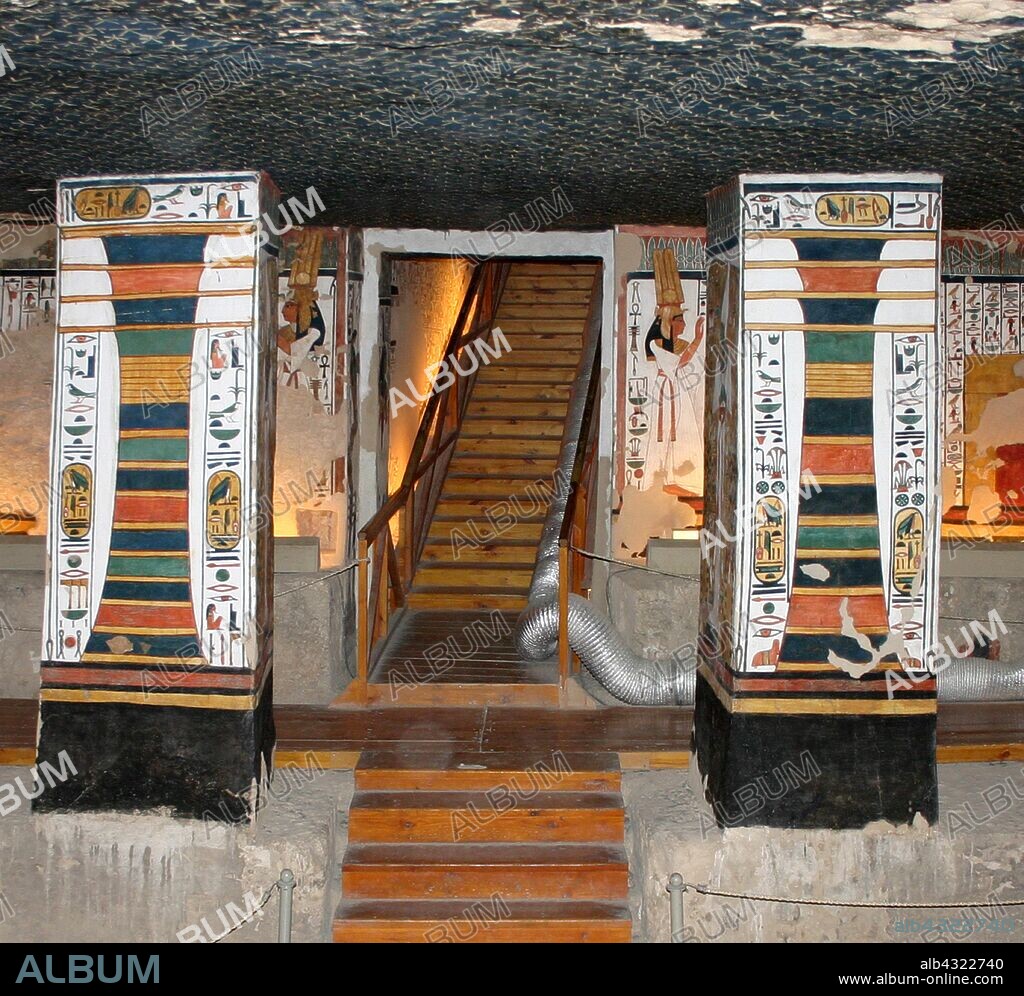alb4322740
The Djed pillar a symbol in Ancient Egypt, representing stability.

|
Ajouter à une autre Lightbox |
|
Ajouter à une autre Lightbox |



Avez-vous déjà un compte? S'identifier
Vous n'avez pas de compte ? S'inscrire
Acheter cette image

Titre:
The Djed pillar a symbol in Ancient Egypt, representing stability.
Légende:
Voir la traduction automatique
The Djed pillar a symbol in Ancient Egypt, representing stability. It is associated with the creator god Ptah and Osiris. Wall painting in the Egyptian god of the afterlife, the underworld, and the dead Wall Painting Inside the tomb (QV66) of Nefertari, in Egypt's Valley of the Queens. It was discovered by Ernesto Schiaparelli in 1904. It is called the Sistine Chapel of Ancient Egypt. In the Valley of the Queens, Nefertari's tomb once held the mummified body and representative symbolisms of her, like what most Egyptian tombs consisted of. Now, everything had been looted except for two thirds of the 5,200 square feet of wall paintings. ca. 1255 BC.
Crédit:
Album / Universal Images Group / Universal History Archive
Autorisations:
Modèle: Non - Propriété: Non
Questions sur les droits?
Questions sur les droits?
Taille de l'image:
4772 x 4395 px | 60.0 MB
Taille d'impression:
40.4 x 37.2 cm | 15.9 x 14.6 in (300 dpi)
Mots clés:
ART, PEINTURE • CAVEAU • DIEU • DIEUX • EGYPTE ANCIENNE • EGYPTE • ÉGYPTIEN • ÉGYPTIENNE • FRANCS-MACONS: SYMBOLES • FUNÉRAIRE • GISANT • MAUSOLEE • MORT TOMBEAU • OSIRIS • PEINTURE • RELIQUAIRE • SÉPULCRE • SÉPULTURE • STABILITE • SYMBOLE • TABLEAU • TABLEAUX • TOMBE • TOMBEAU • TOMBEAUX • TOMBÉS
 Pinterest
Pinterest Twitter
Twitter Facebook
Facebook Copier le lien
Copier le lien Email
Email
